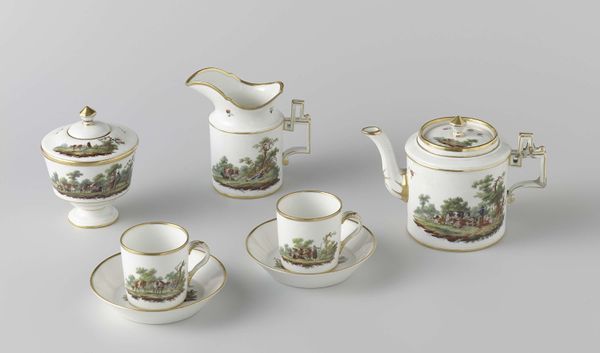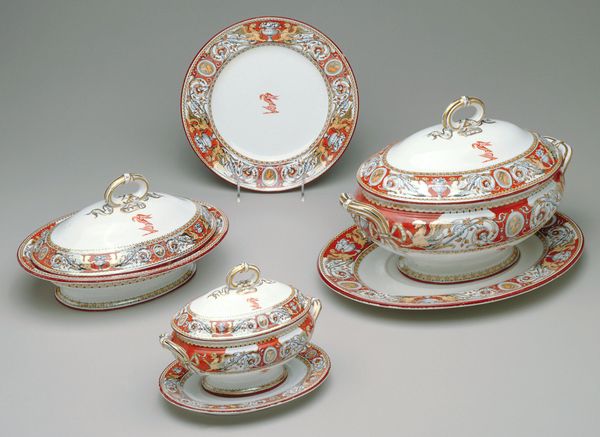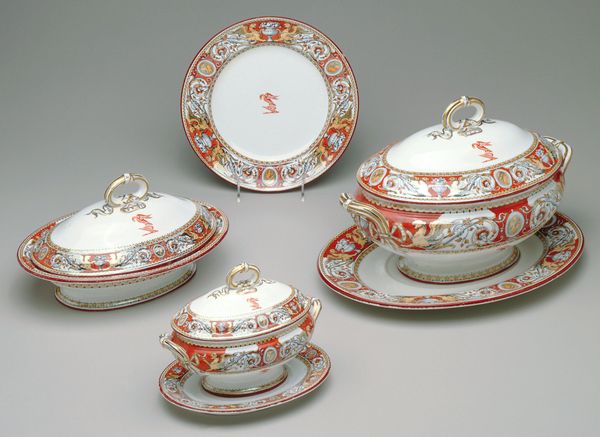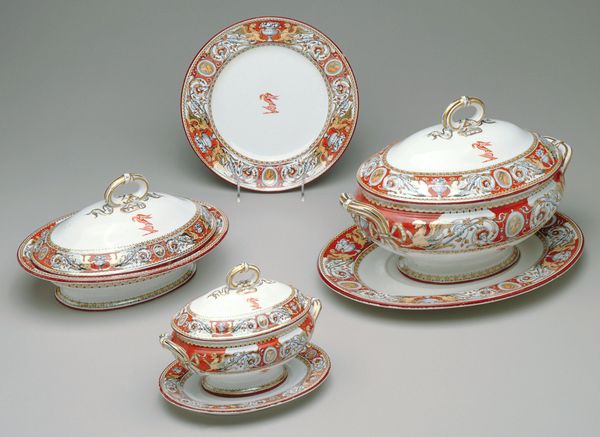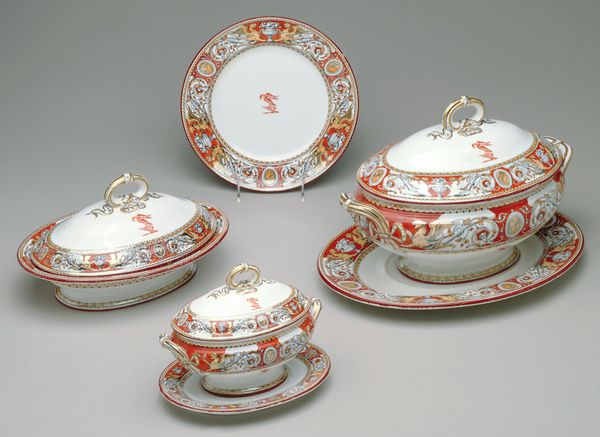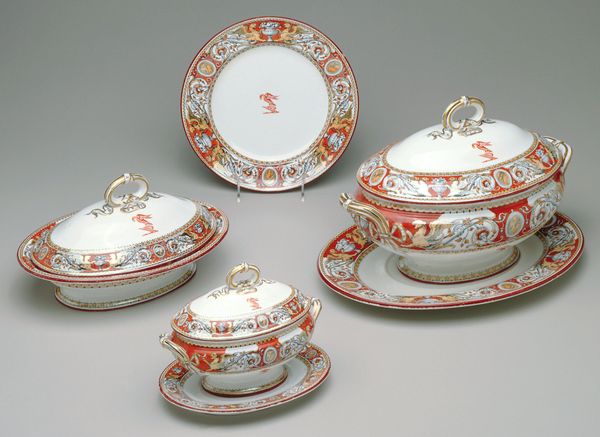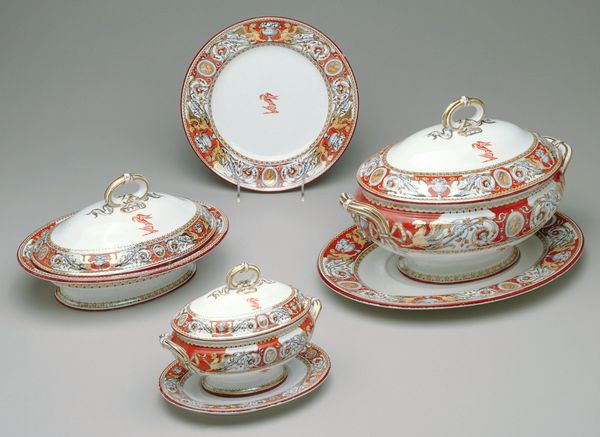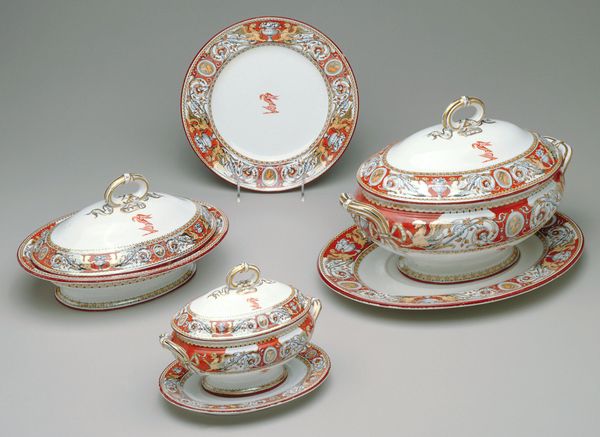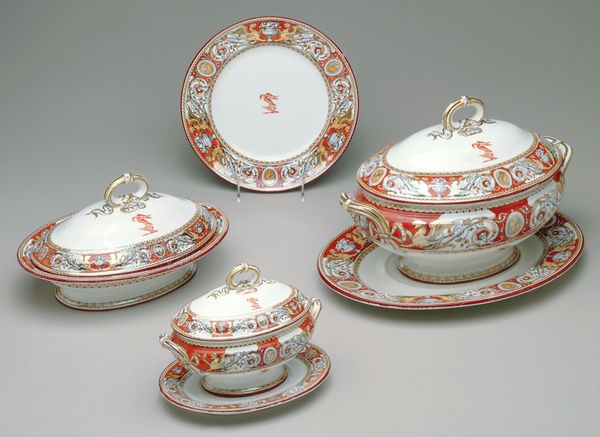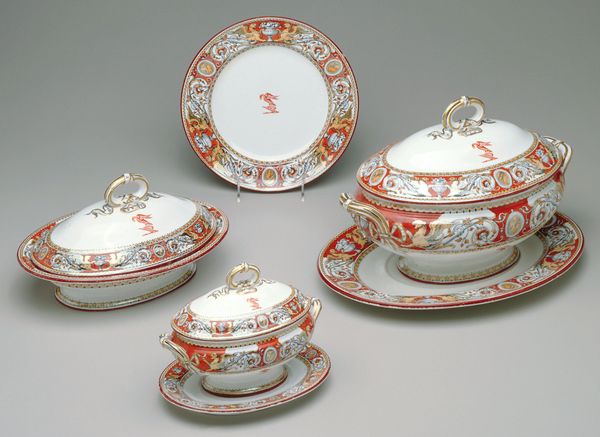
#
product photograph merchandise
#
egg art
#
3d printed part
#
product fashion photography
#
jewelry design
#
culinary art
#
stoneware
#
wash background
#
ceramic
#
watercolour illustration
Copyright: Rijks Museum: Open Domain
Editor: So, this is a coffee and tea service, made around 1775 to 1780 by Höchst. It's currently held at the Rijksmuseum. It strikes me as quite delicate and refined. I am particularly drawn to the portraits decorating each piece. What do you see when you look at this work? Curator: I see a reflection of power and social hierarchy. Porcelain like this was not just functional; it was a declaration. Who could afford such delicate, easily broken luxury items? Notice how these aren’t just portraits, they’re likely portraits of royalty or nobility, subtly implying the owners’ allegiance or aspirations. Think about the labor involved, the access to materials, the global trade networks required to produce something like this. Editor: That's fascinating! I hadn't considered the implied social commentary. Are you suggesting that even a tea set could be a political statement? Curator: Absolutely! Everything within the domestic sphere was imbued with political meaning. Tea and coffee consumption were heavily impacted by issues of colonialism, enslavement, and unequal trade. These items naturalize those power structures; we are meant to sip our tea while overlooking the violence which colonialism represents. The rise of consumerism in this period further solidified class distinctions and created new ways of displaying wealth. Even the act of gathering for tea or coffee becomes a staged performance of social standing. What sort of performance does this tea set facilitate? Editor: Wow, I’m now thinking about the hands that made this, the conditions they labored under. Also, the people who used it and what they were communicating about themselves. Thank you. Curator: My pleasure. Seeing these objects not just as beautiful forms but as historical artifacts helps us understand their place in the social fabric of the 18th century and how those legacies continue to shape our present.
